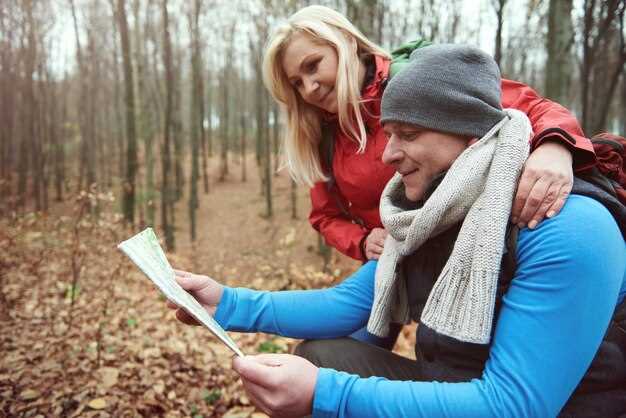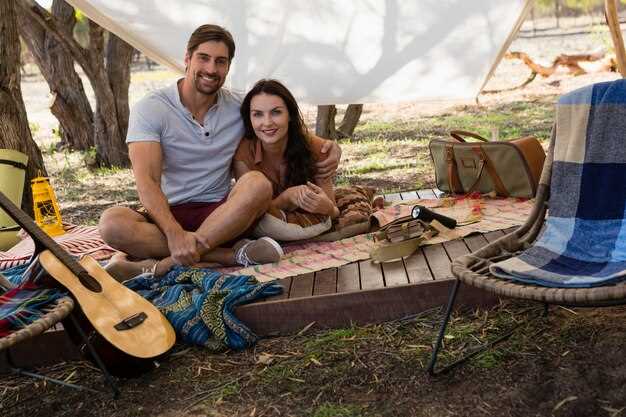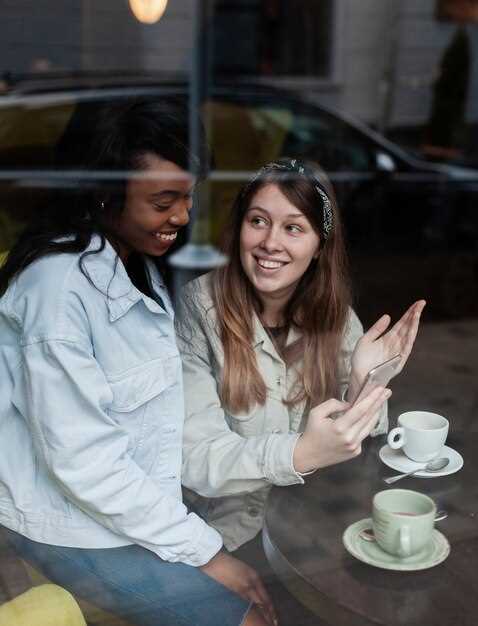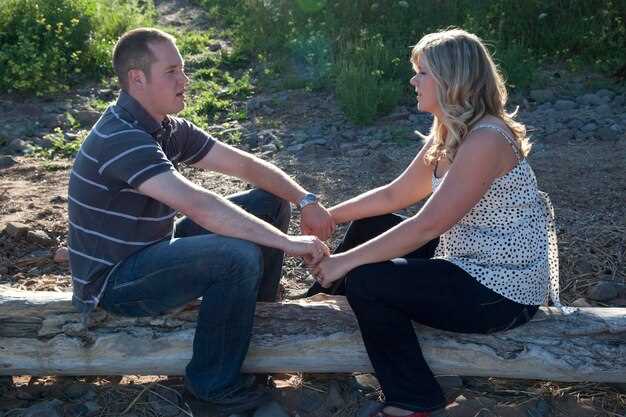Pack three layers per person, two pairs of shoes, a compact first-aid kit and split toiletries so each partner carries half; bring printed confirmations and offline maps. Set a budget cap per day ($60–$150 depending on destination), book one paid activity and one free activity per day, and allocate 60–90 minutes of unstructured time so plans don’t collapse under fatigue.
Schedule two 20-minute check-ins: one in the matin and one après dinner. If someone tends to rise early – caleb, for example, wont sleep late – arrange solo options: a short walk, a café stop, or a museum visit so neither partner feels forced to match the other’s tempo. Agree on one rule per day about pace, distance and screen use to reduce friction between partners.
When a disagreement starts, use the “3-minute pause + 5-minute resolution” method: pause for three minutes, then each person has two minutes to state a single concrete need and one proposed compromise; avoid restating grievances. Keep conversation factual, ask one clarifying question, and write the agreed action ahead of continuing the day. If someone is trying to de-escalate but emotions stay high, step apart for 30–45 minutes without checking phones and reconvene with an honest check: what do we want to deal with now vs. later?
Logistics checklist: bring chargers in a labeled pouch, photocopy IDs, limit photos to 30–50 per day to avoid device bloat, and set a single shared album to collect memories. Expect 2–4 miles of walking per day in urban itineraries; pack shoes that prioritize le confort. Align on sleep windows to match each partner’s lifestyle and the realities of local schedules so your time à l'avance is productive. For long-haul trips, rotate seat-row duties, write contact numbers on paper, and plan one “buffer” day without plans to reset – the small routines protect marriage rhythms and let you actually look at the photos together without stress.
Set a Meet Up Place
Pick one clear landmark and a 20-minute grace window: agree that you’ll wait exactly 20 minutes at the chosen spot; if someone is not there after that window, execute the backup plan. This golden rule prevents wasted time and reduces frustration.
Choose a landmark within 50 meters of the main entrance (fountain bench, big mural, reception desk) and post a photo and GPS pin in your group chat. A visual gives an amazing, unambiguous cue and makes the spot searchable when phones are acting up.
Bring a portable charger and a paper note with the meeting spot written down; that mitigates issues once battery life is gone. Set a trigger phrase to use in messages–one word that signals “I’m on my way” versus “I’m stuck.” Make this part of your daily plan so it becomes habit rather than something you have to fabricate while frustrated.
Agree on one explicit secondary location unless the first is accessible (for example, “left luggage desk” 10 minutes past the primary wait). Specify who will move and when: person A waits full 20 minutes, person B relocates after 10 minutes to the backup. Communicating responsibilities avoids awkwardly standing around while the other is exploring or grabbing food because of hunger.
Decide how much separate time you’ll spend exploring and block it on your shared schedule: e.g., 90 minutes each morning for solo interests, with a set meet-up at 14:00 at the landmark. This practical arrangement fits different lifestyles and preserves the most valuable shared experiences without constant check-ins.
Choose a simple, hard-to-miss landmark as your primary spot
Pick one obvious, permanently visible landmark – a clock tower, large fountain, main transit entrance or a statue on a plaza – and make it your primary meet-up: visible from at least 75–100 m, within a 3–7 minute walk from public transport, and not inside a ticket queue where people get taken out of sight.
Write the exact meeting coordinates (Google Maps link or lat/long) and share a photo that shows nearby signage so they can look for that visual cue; just one person should send the map pin and a timestamped screenshot to avoid duplicate messages. If someone is late, calls should be limited: one call at +5 minutes, a short second call at +12 minutes, then switch to plan B. Plan B: go to the nearest café with a table number or a transit entrance noted in the shared screenshot – leave a final message at +25 minutes saying you’re moving on or staying put; this stops repeated searching that can ruin the afternoon.
Prioritize landmarks that offer comfort and amenities – seating, shade, toilets, phone charging or a café – so a tired or frustrated person isn’t stuck standing. If one of you needs earlier workouts, schedule them separately and express that to avoid mixed expectations; weve seen plans collapse when two people expect different start times. Bring a lightweight charger, a printed note in the local language with the meeting place, and a brief background note about who you are (names, colour of jacket) to show a local staff person if you need help.
To minimize stress, agree on two simple rules before you start: 1) don’t explore further than a single block without sending a quick photo, 2) if you’re gone more than 15 minutes, change status to “moving” in the shared chat. Small gestures matter – a short text that you’re tired or taking a longer break prevents someone else from becoming frustrated. Married or not, the protocol is the same: make decisions that prioritize being together or comfortable rather than making a point. Thinking through who makes a last-minute call, who writes the pin, and who keeps motivation high cuts what would otherwise be a stressful search into a calm, repeatable habit.
Language barriers: learn one short phrase to ask “Where is [landmark]?” and write it in your notes; without that, asking a person in uniform or a station worker is faster. If you want an authoritative list of major hard-to-find vs easy-to-find public landmarks, see the UNESCO World Heritage Centre site for many well-documented public monuments and practical descriptions: https://whc.unesco.org/. For places you’ve both travelled to before, pick the loved, obvious spot close to transit rather than a recommended viewpoint that takes extra time to reach – small choices like that keep the day chill instead of stressful.
Agree on exact coordinates and a specific clock time, not “later”
Agree on exact coordinates in decimal degrees plus a clock time with local timezone and an arrival buffer – e.g., 48.858370,2.294481 at 14:30 CET; aim to arrive 10 minutes earlier (14:20).
Write the pin down in chat and paste the full map link so others can open turn-by-turn directions; include building name or room number if indoors. First confirm the UTC offset (UTC+1, UTC-5 etc.) so “14:30” means the same for both people. If one person is lost, call immediately rather than saying “later” – a 30‑second call removes huge amounts of stress.
Agree beforehand on a fallback: main entrance, a café, or specified rooms inside the venue. Estimate walking time and add a factor of 5–15 minutes for crowds; for long-term plans set a daily check-in time, for occasional meetups keep a single fixed slot. This guide reduces confusion and protects both people’s feelings and peace of mind.
Use live location for 15–60 minutes, set two alarms (30 and 10 minutes before), and send a photo once you arrive. If someone is hungry, start with food-first meetups (meet at the café inside) – that’s absolutely the easiest way to avoid mood swings. Trust your instinct but state a fixed wait time (for example, “I’ll wait exactly 15 minutes, then leave”).
| Place | Pays | Coordinates (lat, lon) | Timezone | Agreed time | Arrival window |
|---|---|---|---|---|---|
| Eiffel Tower | France | 48.858370, 2.294481 | CET (UTC+1) | 14:30 | 14:20–14:35 |
| Colosseum | Italie | 41.890210, 12.492231 | CET (UTC+1) | 10:00 | 09:50–10:05 |
| Times Square | États-Unis | 40.758896, -73.985130 | ET (UTC-5) | 19:00 | 18:45–19:00 |
Checklist before you meet: paste coordinates, confirm timezone, set alarms, share live location, agree on a 5–15 minute buffer, decide who will call if delayed, and name a fallback room or entrance. This idea keeps confusion down, makes meeting in huge crowds manageable, and lets both people feel okay about plans.
Pick one clear secondary location in case the first is crowded
Choose a single backup within 10–15 minutes on foot or a 20-minute taxi (≈5–8 km in urban centres) and save its address and phone number as “Backup” in your maps app; set a 30-minute decision threshold: if the primary queue exceeds 30 minutes or there’s no available seating, move to the backup. This recommendation reflects common lifestyle needs for quick pivots where lines and capacity vary by time of day.
Pre-select three types of places youd accept: a 24-hour café with outlets, a budget room you can book hourly, and a public space with Wi‑Fi. Bring a compact daypack with charger, portable battery, a basic first‑aid kit (include sterile gauze for bleeding), and 2–3 high‑calorie snacks to prevent hunger that fuels bad moods.
If rooms arent available at the hotel, target hostels or private rooms priced between $40–$120 depending on country; check cancellation and admin contacts before arrival and screenshot confirmations so you can rebook fast if plans change at night. In some countries museums or university lounges provide quiet space and power – know opening hours in advance.
Decide roles to manage stress and avoid conflict: assign one person to handle bookings and local admin, the other to handle navigation and logistics. If you’re married or travelling with a partner, set a 10-minute rule to prevent fights when tired – pause, drink water, communicate one concrete next step instead of prolonged thinking.
Plan for small challenges that happen on trips: where to eat if kitchens are closed, where to store luggage if rooms aren’t ready, and where to explore nearby while you wait. Keep a secondary meeting point with clear signage (bench near a fountain or a named café) and a short note on the phone that says exactly where to meet and what to do if one of you goes offline.
Decide which phone apps or features you’ll use to share live location
Choose one primary app (Google Maps Location Sharing or Apple Find My) and one backup (WhatsApp or Life360); set sharing for at least 8 hours, test once before you leave, and disable battery optimization on both devices to ensure full background updates.
Google Maps gives continuous coordinates with ~5–20 m accuracy in a dense city; Life360 adds driving detection and crash alerts, while WhatsApp is better for manual pings – pick based on whether you need a constant flow of location data or occasional location drops, and check more in-app privacy toggles when researching accuracy and data retention.
Buy a 10,000–20,000 mAh power bank from amazon and assign one person to carry it: if john’s phone went below 30% he should plug in immediately to avoid those huge gaps taken when batteries fall and location updates stop; if location isnt updating, call the person so you can hear background noise or confirm position rather than guessing.
Before researching plans each morning, share the day’s route so the other can look up ETA and reduce much back-and-forth; avoid fighting over directions by agreeing whether to auto-share between hotel check-in and nightcap, and review settings after the first few hours. Think of location sharing as a tool that preserves love and real conversation for special moments – this approach keeps practical coordination simple and the best parts of the vacation intact.
Set a wait-time rule and a step-by-step plan if someone is late
Agree in advance to wait at least five minutes at the meeting point, then switch to the formal plan below if theres no response – absolutely avoid making ad-hoc decisions that escalate emotions.
-
0–5 minutes: remain in the same room or at the agreed landmark; send one short text and share live location. If they havent replied, call once and note the exact time you called.
-
5–15 minutes: call a second time and message a social contact who might know their plans; check current time zone if youre in different countries. If theyre walking and you can see them on the map, pause and keep walking slowly toward them rather than leaving.
-
15–30 minutes: choose one of two active options – either wait one more fixed block (e.g., another 15 minutes) or proceed to the pre-agreed fallback (lobby, bar, or another room). Before leaving, take a photo of the room or meeting spot, leave a short note, and send a final message saying where you went.
-
30+ minutes: enact the consequence agreed beforehand: the late person covers the next small expense or handles the next set of decisions. Keep consequences limited to fair, time-bound things so they dont feel like forever punishment and so fights over lateness decrease.
Concrete ground rules for different situations:
- For active exploring: set a clear rendezvous room and a maximum wait time; if youre at a museum or party, choose the room near entrance as the meeting point.
- For long-distance or unfamiliar countries: add a buffer for time zone errors and factor in local transit times; always share a live pin when plans are tight.
- For married or long-term partners who tend to be late: write the plan down, sign it with small incentives, and agree to revisit after a few occurrences instead of arguing in the moment.
Quick checklist to reduce confusion: share location, set alarms for both parties, agree on the best fallback room or public spot, decide on a single phrase to confirm “I went to X,” and keep consequences simple so more cooperation happens and fewer fights follow.


 Couples Vacation Survival Guide – Stress-Free Travel Tips">
Couples Vacation Survival Guide – Stress-Free Travel Tips">



 Corps bruns — Signification, histoire et importance culturelle">
Corps bruns — Signification, histoire et importance culturelle">
 6 Façons Fondées sur des Preuves de Se Reconnecter à Votre Partenaire | Conseils Éprouvés">
6 Façons Fondées sur des Preuves de Se Reconnecter à Votre Partenaire | Conseils Éprouvés">
 Ce que ma maman m'a dit et qui renforce encore ma confiance | Conseils pour la confiance en soi">
Ce que ma maman m'a dit et qui renforce encore ma confiance | Conseils pour la confiance en soi">
 41 Questions That’ll Take Your Dates to the Next Level | Conversation Starters for Memorable Dates">
41 Questions That’ll Take Your Dates to the Next Level | Conversation Starters for Memorable Dates">
 10 Ways to Ask for What You Want – Practical Tips & Phrases">
10 Ways to Ask for What You Want – Practical Tips & Phrases">
 Anxiety, Fear & Panic – Symptoms, Causes & Coping Strategies">
Anxiety, Fear & Panic – Symptoms, Causes & Coping Strategies">
 4 Negative Habits That May Be Making You Sick | Health Tips">
4 Negative Habits That May Be Making You Sick | Health Tips">
 8 Reasons You Should Never Compromise — Protect Your Values & Success">
8 Reasons You Should Never Compromise — Protect Your Values & Success">
 11 Reasons You Keep Falling for the Wrong Man — How to Stop">
11 Reasons You Keep Falling for the Wrong Man — How to Stop">
 Control Issues in Relationships – Signs, Impact and How to Heal">
Control Issues in Relationships – Signs, Impact and How to Heal">